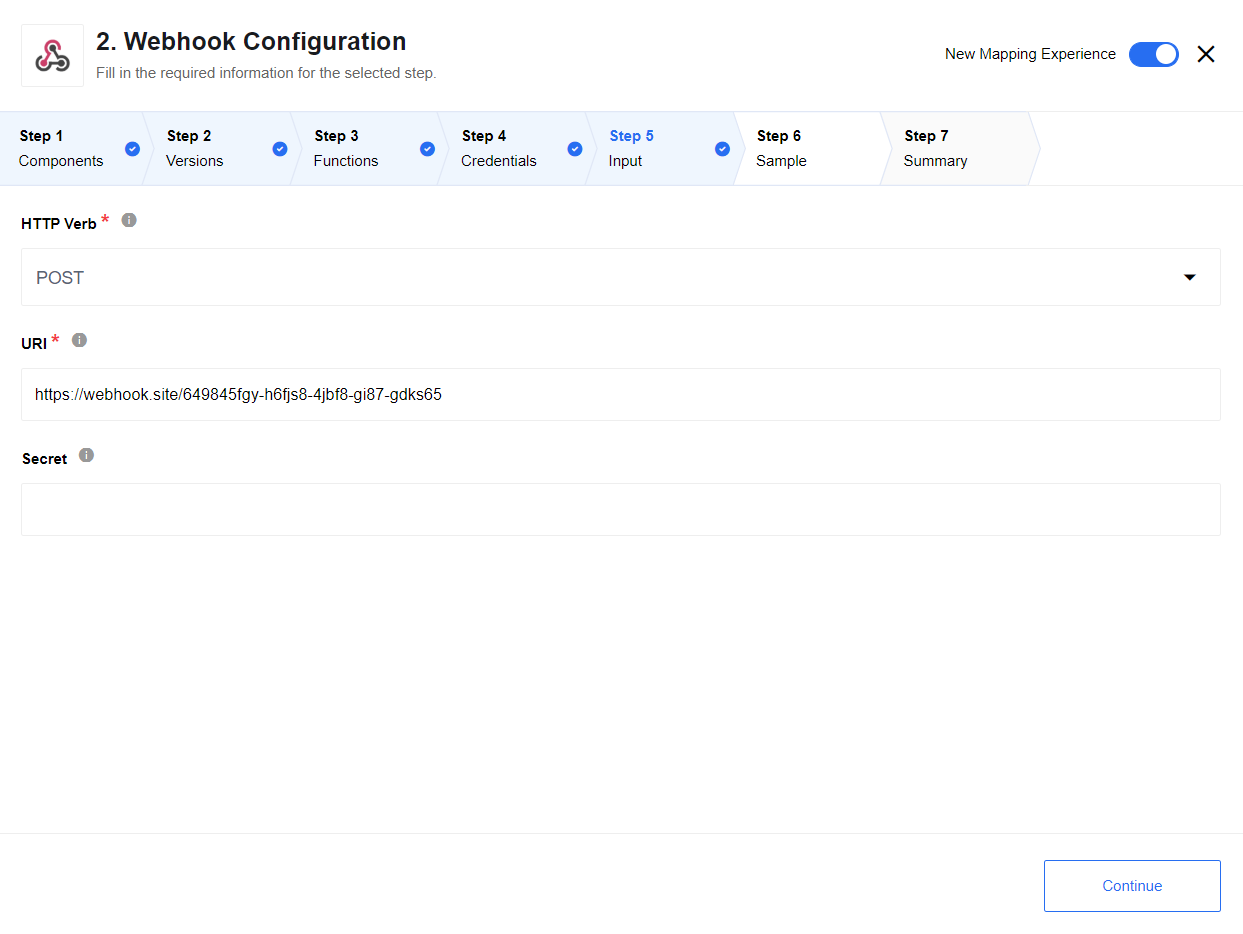Webhook
The webhook component is an open-source component for sending and receiving webhooks on Squiz Connect.
Credentials
The webhook component supports the following authorization types:
- No Auth
-
Use this method to work with any open REST API
- Basic Auth
-
Use it to provide login credentials like username/password
- API Key Auth
-
Use it to provide API Key to access the resource
- HMAC verification shared secret
-
Use it to verify via a shared secret.
The only encryption algorithm supported is SHA512.

Triggers
Receive
When used as the first step in a flow, the webhook component is used as a trigger, which receives data as input, and then commences the rest of the flow’s execution.
Example:
{
"recievedBody": "recievedBody",
"_query": {},
"_headers": {
"content-type": "application/json",
"accept": "*/*",
"accept-encoding": "gzip, deflate"
},
"_method": "POST",
"_url": "/hook/5d691738cb5a286adc1e68e2"
}
Actions
Send data
When not used as the first step in a flow, this webhook component sends the data it receives as input to the URL provided.
The webhook action can also be used to troubleshoot many processes to observe their outcome. For example, one could create Invoices (in Salesforce) as a webhook action in a flow and configure this component with a URL created in https://webhook.site or with any similar services.
Configuration
- POST
-
The webhook component can POST information to a pre-configured webhook address. This action could be used for different purposes. For example, the webhook component can be used to inform a custom connector about an event that the connector is waiting for.
- PUT
-
The webhook component can also PUT a specific, pre-configured, JSON object through a specific address where the process will not be handled by the server. The "Output JSON Sample" field can be the source for this pre-configured object.
- URI
-
The webhook action is sent to this address.
- ( optional ) Secret
-
A field to authenticate webhook POST. Only used when a password or secret are required. For example, when the webhook address is generated explicitly with a password to prevent third parties from using the address. This could be the specific webhook address used to send WordPress posts to the server.

Example:
{
"recievedBody": "recievedBody",
"_query": {},
"_headers": {
"content-type": "application/json",
"accept": "*/*",
"accept-encoding": "gzip, deflate"
},
"_method": "POST",
"_url": "/hook/5d691738cb5a286adc1e68e2"
}